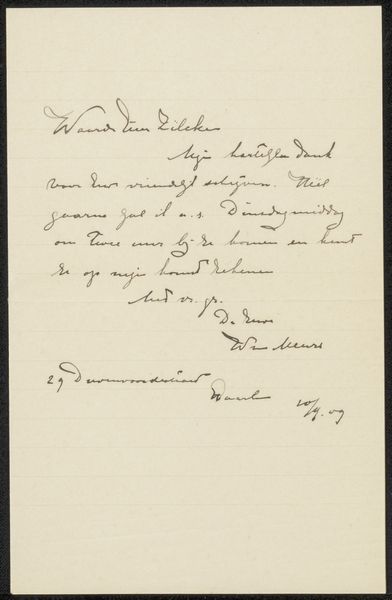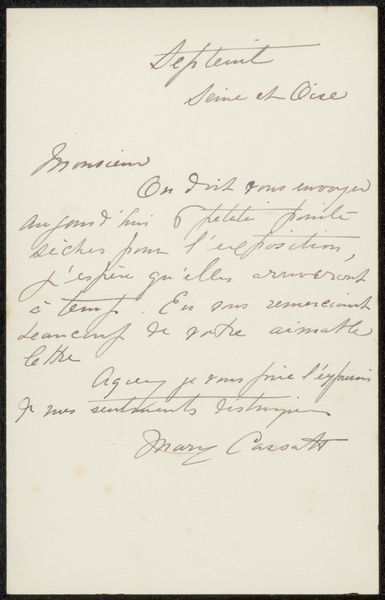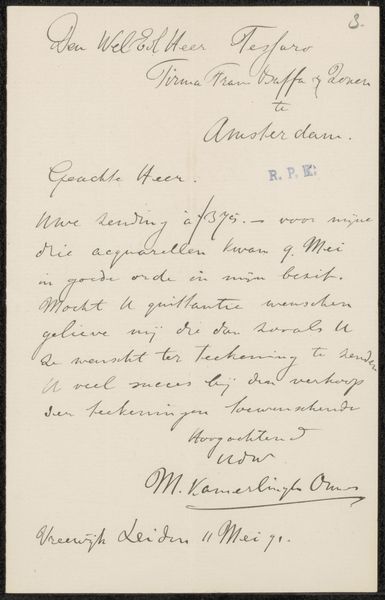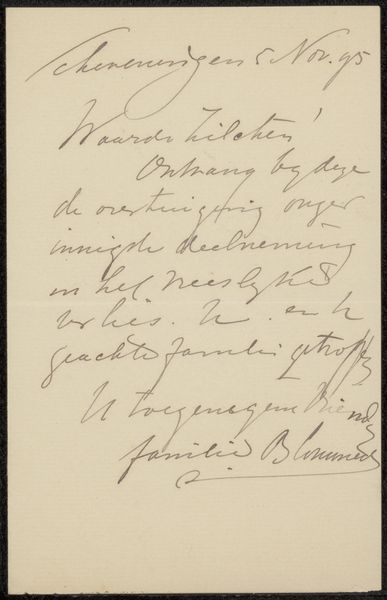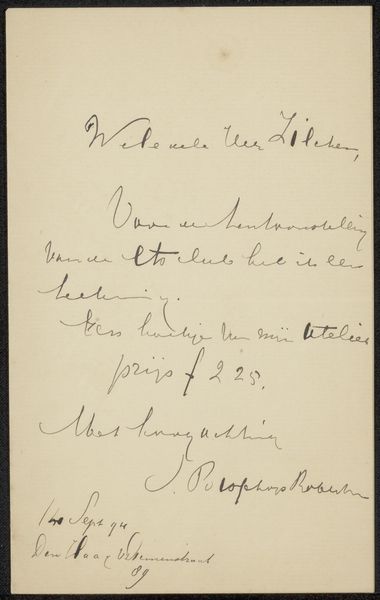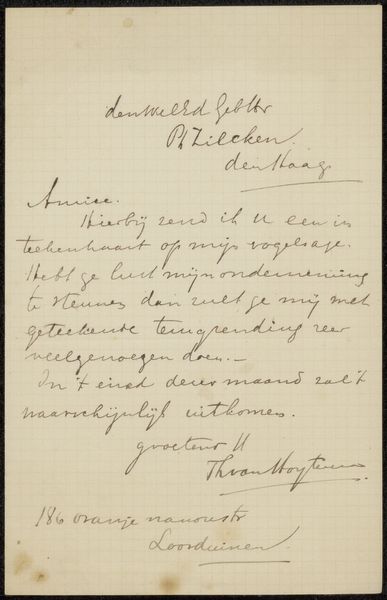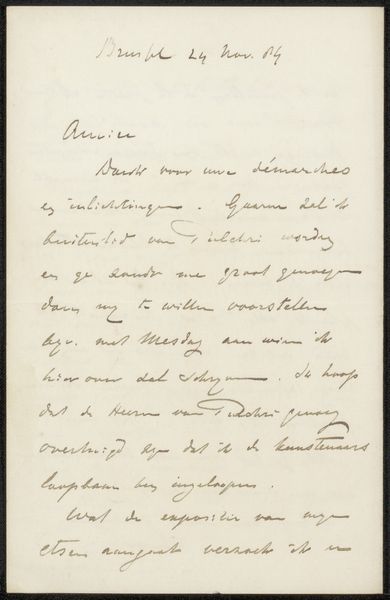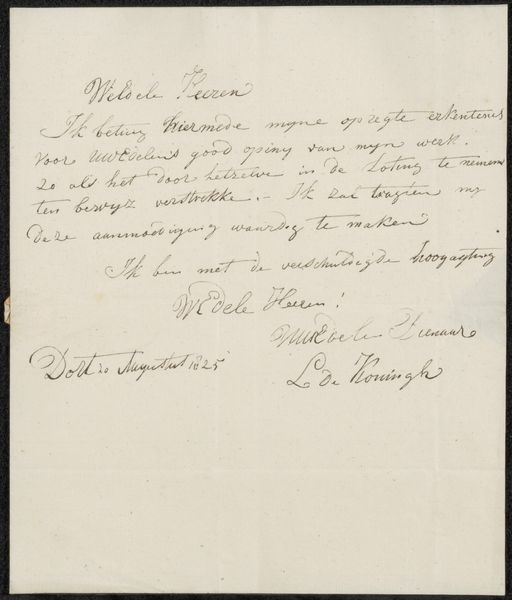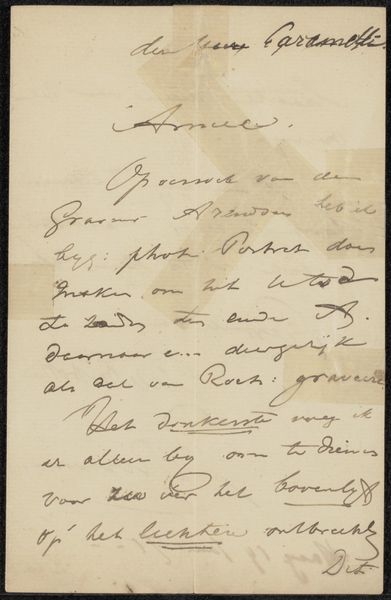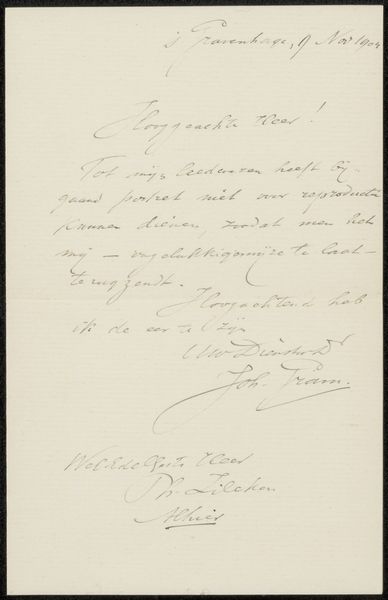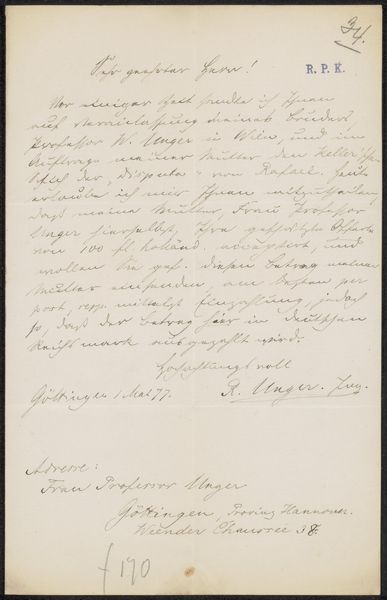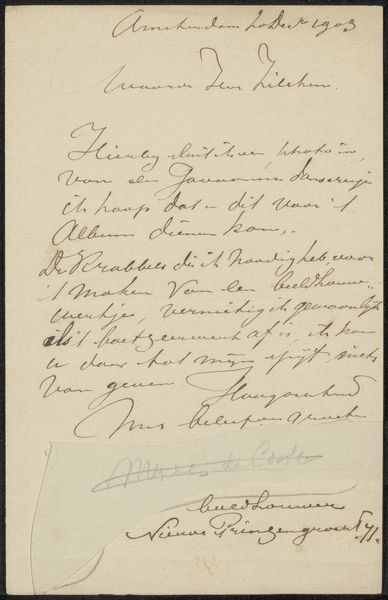
drawing, paper, ink, pen
#
drawing
#
script typography
#
hand-lettering
#
old engraving style
#
hand drawn type
#
feminine typography
#
hand lettering
#
paper
#
ink
#
hand-drawn typeface
#
intimism
#
thick font
#
pen work
#
pen
#
handwritten font
#
modernism
Copyright: Rijks Museum: Open Domain
Curator: Here we have "Brief aan August Allebé," a drawing by Anna Gildemeester, possibly from 1915, rendered in ink on paper. It strikes me as an intimate piece, almost a whisper from the past. Editor: Intimate is right. Looking at this letter, the elegant cursive feels delicate, and almost melancholic, doesn't it? I wonder what was happening historically around this period, given it’s the time of World War I. Was Gildemeester affected? How did the political and cultural landscape impact the themes in her letters and art more broadly? Curator: Good question! Gildemeester was working in a period of significant social change, and of course, artistic modernism. It would be difficult to assume she was totally isolated from socio-political influences. However, Intimism, the movement associated with this letter, favored quiet, domestic scenes and personal experiences. Perhaps, given the war raging, turning inward was a form of resistance, an embrace of the personal and emotional in a world gone mad. Editor: That's compelling. Intimism, when viewed through a feminist lens, highlights women’s interior lives and domestic spaces that were often marginalized. Gildemeester may have consciously focused on the personal as a valid form of expression within the confines of a patriarchal society and destructive world war. Curator: Absolutely. And beyond the thematic considerations, there's the skill involved in the penmanship. The consistent stroke, the rhythmic flow of the letters. It's a crafted work as much as a message. It highlights, I think, how communication itself can be an art form, imbued with both utility and aesthetic intention. The fact that it survived indicates the historical importance of these exchanges as objects worthy of keeping and exhibiting. Editor: I agree. And if you consider it beyond just simple hand-lettering, there are questions raised around gender and craft. Are we undervaluing “feminine” arts like calligraphy? Perhaps it’s time we critically reassess what we deem worthy of preservation in our galleries and museums. What are we missing when we focus on traditional paintings alone? Curator: Certainly a vital point, underscoring how cultural values affect art’s display. "Brief aan August Allebé” gives us the space to assess these critical frameworks. Editor: Right, it provides us a rich example that pushes boundaries of how we view a Modernist letter as both a work of art and cultural heritage.
Comments
No comments
Be the first to comment and join the conversation on the ultimate creative platform.
